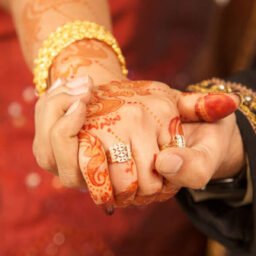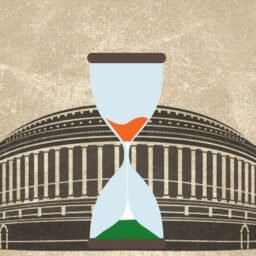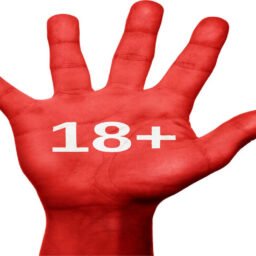INTRODUCTION
The socially constructed caste system in India has always been an issue of paramount importance as well as contention. The caste system has continuously evolved with newer and subtler forms of discrimination emerging in the modern era. The system and its discriminatory practices assert their dominance over the subcontinent veiled behind a façade of equality. The persistence and pervasiveness of the system even with rapid transitions in law and order is a matter of extreme concern in India.
The system’s discriminatory claws have a stronger hold on lower caste women who not only bear the brunt of gender inequality but also oppression due to their identity as lower castes. Lower caste women are subject to dual patriarchy, both from men in their families and upper-caste men. This paper elaborates on the augmented effect of the caste system on a woman who faces twofold discrimination due to their caste as well as gender. Further, it highlights the prevalent yet ignored dimensions of the subjugation that Muslim women face in their caste system known as ‘Syedism’. The essay concludes with an emphasis on movements of change like the Dalit feminist studies and the National Federation of Dalit Women.
THE SPECTRUM OF CASTE
The caste system has persisted in India through the past three thousand years with religious dogma, conservative ideologies, and political structures supporting it.[1] The system stems from within the political and social life and continues to have a strong grip in the current day scenario. The most oppressed and subjugated among the lower castes are women who face a huge amount of backlash, harassment, and inequality due to their gender as well as social status.
These women continue to be prejudiced against and are bearing the burden of familial and societal pressure while coming to terms with mistreatment daily. The lower caste women are subject to the complexities of patriarchal norms from the men of their society and the outside males too. These women are often victims of sexual assaults, rape, and violence coupled with the administration crushing their voices and denying legal aid. The Kathua and Hathras rape cases are examples of heinous crimes being oppressed by the bureaucratic structure. These women are also discriminated against in workplaces and have significant pay gap differences in comparison to people working in similar positions. The caste system in Muslims is hidden behind a garb of equalitarianism yet the discrimination continues. However, the discrimination that lower caste women face in the Muslim community is never talked about.[2]
Their concerns are not even voiced since they are a minority community in India. The modern era has ushered in prominent movements of change like the formation of the National Federation of Dalit Women and the evolution of Dalit feminism. In order to evolve as a united nation, India needs to leave behind its age-old conservative ideas and treat each human as equal.
CASTE- A PHENOMENON ACROSS RELIGIONS
The Hindu caste system has emanated from the Brahmanical text-Manusmriti, which divided people into different castes based on the notion of dharma (duty) and karma (work). This system divided Hindus into four categories- Brahmins, Kshatriyas, Vaishyas, and the Shudras for the basis of maintaining law and purity in society.[3] The lower castes were segregated from the mainstream society and had different colonies, water resources, and other public amenities. Albeit belated, the deplorable fact is that the system has persisted despite laws banning discrimination, untouchability, and providing quotas to correct this historical wrong.
The higher castes are interested in preserving their privileges and justify their discriminatory crimes because of their status. Currently, discriminatory practices are being performed in a disguised manner and shielded by Hindu-extremist groups in power. The burnt is borne by lower caste women, who are subjected to atrocities and violence every day. These women are sometimes made “devadasis” (temple prostitutes) and the privileged society claims this as a step to purify them. The legal and political system has also failed them badly by discriminating against them and denying them access to courtroom justice.
Similar to the Hindus, Muslims also follow a hierarchy-based system – “Syedism” despite Prophet Muhammad’s teachings of equality and defining humans based on personal piety. The Muslims are divided into two main groups- Ashrafs (descendants of Arab immigrants) and Ajalfs, (Hindu converts and others).[4] However, caste hasn’t politically divided Muslim males because of the fear of being targeted by Hindu extremists on the basis of their religion. The caste system has affected the lower caste Muslim women very profoundly and limited their role to households. They are forced to take up lowly paid jobs as household maids, cooks, servants, and scavengers. Upper caste Muslim men regularly harass or sexually assault them, while the men of their community suppress their voices against such crimes. Lower caste Muslim women are restricted to the confines of their community and their activeness in public spheres is considered as an invite to upper-classmen for the fulfilment of their sexual desires. Unlike lower caste Hindu women, whose condition has been recognized by society the derogatory treatment of these women is neither recognized nor considered unlawful.
THE RAPE OF BOTH DIGNITY AND SEXUALITY
Starting the lower caste women are ripped off their dignity, respect, and sexuality while being subjected to heinous crimes like rape, prostitution, and assault. Women empowerment seems a far-fetched dream if such irrational customs continue to propel such instances.
The brutal rape of a 19-year-old lower-caste girl in the backward and poverty-stricken village of Hathras, Uttar Pradesh is a stark reminder of how caste continues to play a dominant role in Indian society. The village is chained in the strong shackles of the caste system and the caste is subjected to constant discrimination, derogatory remarks, and assaults. The victim was a lower caste girl who was allowed to only study till the primary level and remain confined to her household. She was brutally raped and assaulted by four upper-caste men who treat lower caste women as mere objects to be toyed with.
The incident was buried down by various repressive administrative measures like delay in collecting forensic evidence, mishandling of evidence, and prejudice against lower caste people’s testimonies.[5] The victim succumbed and in a ghastly turn, the police cremated her overnight without the permission of family members. Further, to hide these misdeeds from the public eye the administration heavily guarded the victim’s family and put an absolute ban on visits by politicians as well as reporters.
This incited public outrage and the incident came under the limelight, compelling the security agencies and government to deliver justice. Dalit organisations like Bhim Sena and Bahujan Samaj Party came forward turning the issue into a political agenda. The impunity under which the administration acted stemmed from faith in the Hindu-extremist BJP ideology that would protect the upper caste men. The Yogi administration has often in the past indulged in pro-Hindu nationalist activities making the lower castes more vulnerable to such horrible crimes. Lower caste women were again at the helm and the justice they received came late enough to shake their belief in a secular and equal India (“Attacks on Dalit Women: A Pattern of Impunity – Broken People: Caste Violence Against India’s Untouchables- Human Rights Watch Report, 1999”).
CONCLUSION
The Unnao and Kathua rape cases were similar instances that rattled the nations and reared the ugly discriminatory practices of the caste system. Lower caste women have been fighting these barbarous crimes against them by upper caste men with the judicial system also weighing heavily on them. Their community men do not disclose these crimes in public for the fear of being stigmatized and the violent repercussions that they would be subjected to.
The NCRB data also reveals a significant decline in the reporting of such crimes by women in the category of SCs, STs, and OBCs. These cases have exposed the nexus between government officials and the “upper caste criminals”. Lower caste women are left with no place to seek justice or aid. Amidst the current rise of Hindu-extremist groups who consider these women impure and unchaste, the future for them remains bleak.
Author(s) Name: Shreya Tiwari (Jindal Global Law School, Sonipat)
References:
[1] Teltumbde, Anand. 2010. The Persistence of Caste. Zed Books: London.
[2] Ansari, Khalid. 2019. “India’S Muslim Community Under a Churn: 85% Backward Pasmandas Up Against 15% Ashrafs”. The print. https://theprint.in/opinion/indias-muslim-community-under-a-churn-85-backward-pasmandas-up-against-15-ashrafs/234599/.
[3] Caste, Class and Gender: The Historical Roots of Brahmanical Patriarchy.” In Gendering Caste: Through a Feminist Lens, First Edition, http://dx.doi.org/10.4135/9789353287818.n4.
[4] Patnaik, Pratik. 2020. “Caste Among Indian Muslims Is a Real Issue. So Why Deny Them Reservation?”. The Wire. https://thewire.in/caste/caste-among-indian-muslims-real-why deny-reservation.
[5] Kumar, Anuj. 2020. “Hathras Gang Rape | A Long Caste Feud, A Horrific Crime, And A Sudden Cremation”. The Hindu. https://www.thehindu.com/news/national/other-states/hathras-gang-rape-a-long-caste-feud-a-horrific-crime-and-a-sudden-cremation/article32754625.ece.















